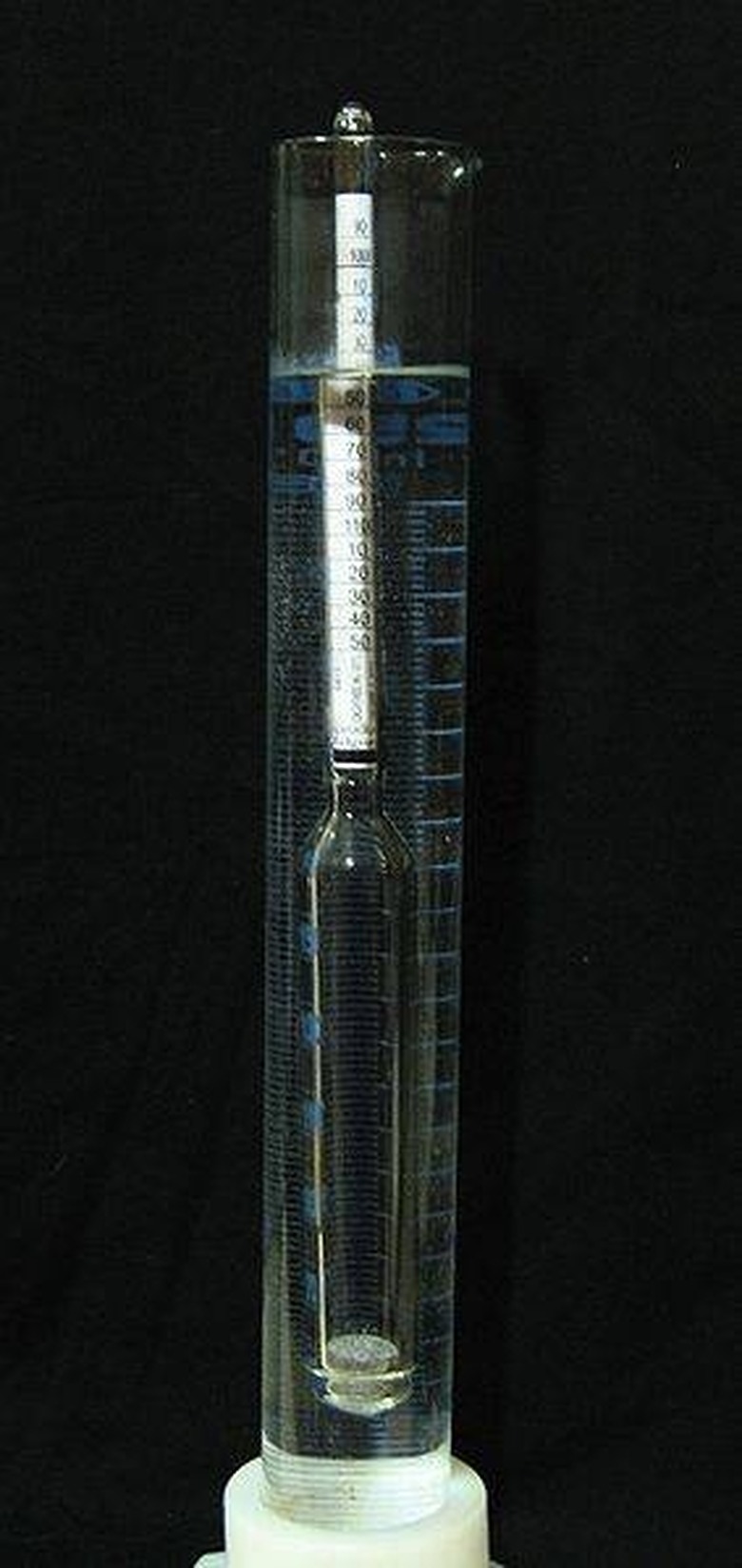Hydrometer Calibration Procedures
A hydrometer is a device that measures the specific gravity of a liquid. They can't be adjusted, so calibration consists of determining a correction factor to apply after taking the measurement. Hydrometers are sensitive instruments and their readings are significantly affected by minor changes in the environment, especially temperature.
Definitions
Definitions
Specific gravity is the density of a substance relative to that of a reference material and may also be referred to as relative density. Typically, the reference material is water at four degrees Celsius, which has a density of approximately one gram per cubic centimeter (g/cm^3). In this case, the specific gravity of a substance is equal to the density of that substance in g/cm^3.
Theory
Theory
A hydrometer uses the principle of Archimedes to measure the specific gravity of a liquid. According to this principle, the weight of an object floating on a liquid will be equal to the weight of the liquid that it displaces. Since the weight of the hydrometer is fixed, the weight of the liquid it displaces is also fixed. A measured scale on the side of the hydrometer can therefore provide the specific gravity of the liquid.
Operation
Operation
A hydrometer is typically a long, narrow cylindrical object with a weighted bottom so that it will float upright. The hydrometer is placed in the liquid and spun so that any air bubbles are dislodged. Once there are no air bubbles clinging to the side of the hydrometer, the scale at the surface level of the liquid is read.
Temperature Correction Factor
Temperature Correction Factor
The density of liquids will change as the temperature of the liquid changes. An accurate measurement of a liquid's specific gravity will therefore require that its temperature be known. A commercial hydrometer will typically be accompanied by a chart that provides the correction factor to apply for a given temperature.
Verification
Verification
A hydrometer's accuracy can be verified by measuring the specific gravity of liquids with a known temperature and composition. For example, a sample of pure water will have a specific gravity of approximately 0.998 at 20 degrees Celsius. The correction factor is calculated by subtracting the observed specific gravity from the predicted specific gravity. This correction will then be applied to any specific gravity measurements taken with the hydrometer.
References
Cite This Article
MLA
Robinson, Allan. "Hydrometer Calibration Procedures" sciencing.com, https://www.sciencing.com/hydrometer-calibration-procedures-5501425/. 24 April 2017.
APA
Robinson, Allan. (2017, April 24). Hydrometer Calibration Procedures. sciencing.com. Retrieved from https://www.sciencing.com/hydrometer-calibration-procedures-5501425/
Chicago
Robinson, Allan. Hydrometer Calibration Procedures last modified March 24, 2022. https://www.sciencing.com/hydrometer-calibration-procedures-5501425/
